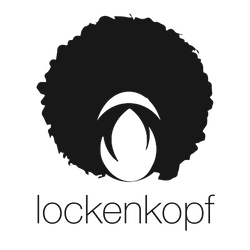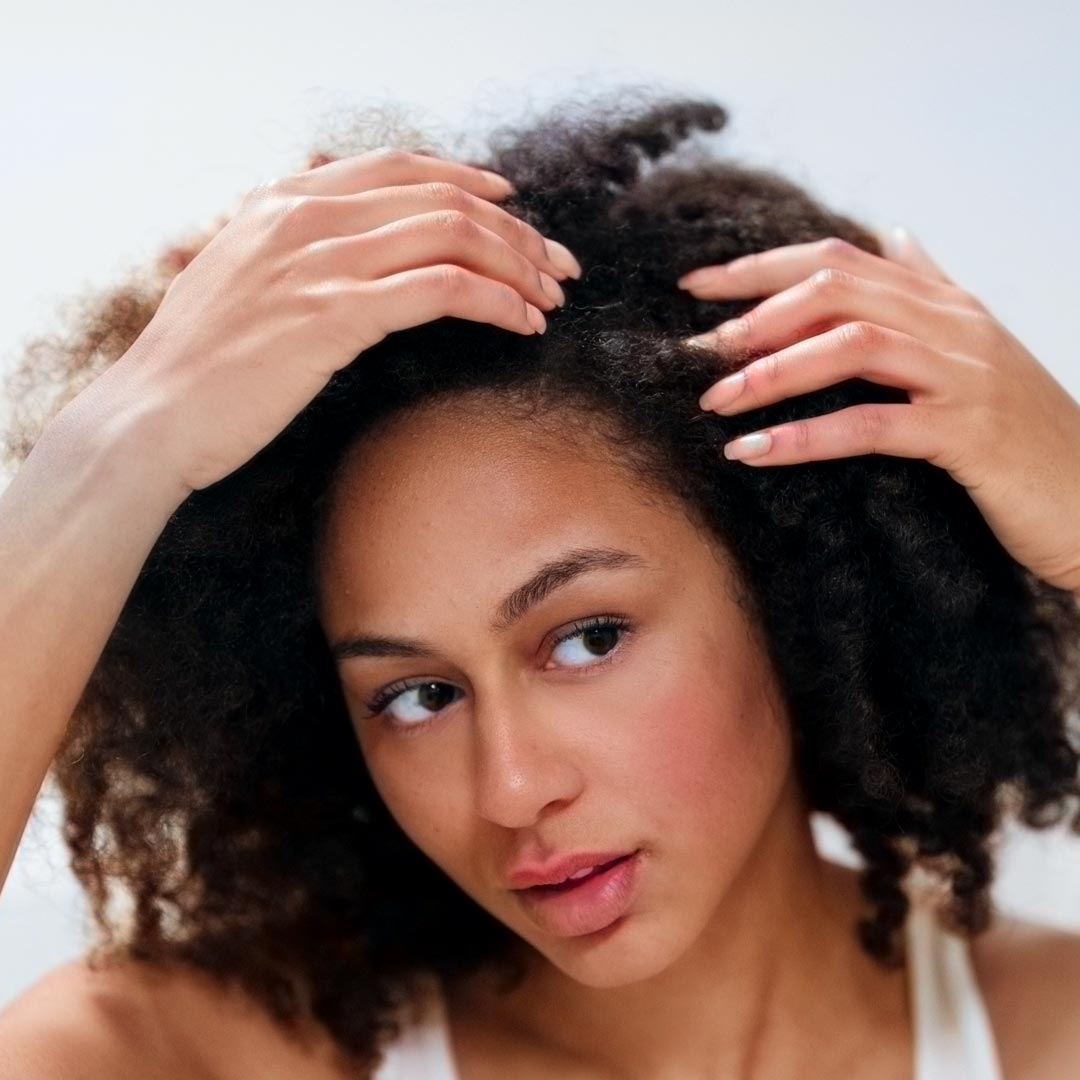When curls get too much care – what's really behind it
Maybe you've already experienced it: Your curls suddenly seem heavy, dull and somehow lifeless – even though you've cared for them with dedication. Many curly heads know this phenomenon. The cause is often an oversupply: too many intensive masks, very rich products or an imbalance between moisture and protein.
But don't worry, your curly mane is not lost. In this article, you will learn how to recognize that your curls are over-conditioned, which factors play a role and with which steps you can give them back their natural strength and vitality.
What exactly are over-conditioned curls?
You want to do something really good for your curls – masks, leave-ins, oils, and a serum on top. But suddenly they no longer look lively, but tired, limp, and heavy. This describes the phenomenon of over-conditioned curls. It means that your curls have become unbalanced due to too much care. In short: over-conditioned curls occur when care is applied without balance – visible in limp, heavy-looking curls.
With over-conditioned curls, something paradoxical happens: instead of defined, elastic strands, you get weak waves that lose their bounce. Your hair might even feel soft, but more 'rubbery' than healthy. This condition has nothing to do with a lack of care – but rather with the protein-moisture balance being off.
When the balance is lost, your curls suffer either from excess moisture or excess protein. In the first case, they are too swollen and appear weak, in the second case, they feel dry, straw-like, and brittle. That's precisely why the right mix is crucial.
And there is a third culprit: so-called build-up. This means that products, silicones, or even minerals from hard water accumulate. Your hair then looks greasy or weighed down – even if you have just washed it.
In short: Over-conditioned curls are not a sign of too little effort, but of too much of a good thing. But don't worry, curly friend – once you know the causes, you can bring your curls back into balance step by step.
The typical signs of over-conditioned curls are:
- Limp curls that hang down lifelessly and without bounce.
- Greasy curls that feel stringy and weighed down even shortly after washing.
- Curls feel slimy after washing – a classic sign of build-up.
- Curls feel waxy, especially in the lengths.
- An itchy or flaky scalp due to a lack of scalp cleansing.
- The curls lose their definition and quickly droop.
So, the problem isn't a lack of cleanliness, but that the balance of your curls is messed up – and we're going to bring it back into balance together now.
Moisture overload and the danger of hygral fatigue
If your curls are constantly supplied with conditioner, leave-in, and rich moisture masks, the hair can become oversaturated at some point. It looks soft, but also limp and rubbery. Often, a strand can be stretched unusually far – instead of snapping back with a gentle 'snap', it remains stretched out.
If your curls are too soft and appear almost rubbery, this clearly indicates a moisture overload. The cause is the constant swelling and contracting of the hair fiber with each wash – the so-called hygral fatigue. The hair loses elasticity, becomes weak, and tends to break.
Important: Moisture care in itself is not wrong. Only when it is used without a balance of proteins does the system get out of balance. The right amount makes the difference.
Protein overload and why the protein-moisture balance is so important
While everything seems too soft with moisture overload, a protein overload shows the opposite: the curls feel hard, straw-like, and dry. Instead of springy elasticity, you feel resistance when combing or styling – and sometimes the curls break even with slight stress.
Hair proteins act like a framework for your curls – too much of it, however, makes them brittle. The right amount of protein in the curls is crucial: enough for stability, but never so much that the curls appear stiff.
Again, the hair needs both – proteins and moisture. Only in combination does the protein-moisture balance arise, which makes your curls healthy, strong, and full of bounce.
A simple hair porosity test helps you to recognize whether your curls need more proteins or more moisture.
Curly hair protein overloadToo much protein makes the hair fiber stiff and prone to breakage.
Build-up – when products make everything even worse
Sometimes, the problem isn't really too much protein or moisture, but simply build-up. This means that residue from styling products, rich conditioners, curl care products, silicones, or even minerals from hard water are accumulating on your hair and scalp.
The tricky thing is: Build-up imimitates the same symptoms as over-conditioned curls. Your curls look heavy, lifeless, and lose their definition, even though you've just washed them. Sometimes the scalp also feels itchy or oily – a sure sign that there are deposits involved.
In this situation, many curly-haired people instinctively reach for even more care products – but this only makes the problem worse. Instead of another moisture mask or an extra portion of oil, your hair needs something completely different at this moment: a reset. With a good clarifying shampoo – like the sulfate-free Deep Cleansing Shampoo or a targeted deep hair cleanse, you can remove stubborn deposits of products, minerals, and environmental influences. It also regulates the pH value and immediately gives your curls a breather. If you prefer a natural alternative, you can use a homemade vinegar rinse (e.g. with apple cider vinegar) as a temporary reset.
So, it's important to distinguish the causes: Are your curls really out of balance, or is it simply a case of build-up? Only when you know this can you take targeted action – and save yourself the frustration of endless failed attempts.
Symptom Matrix – Moisture Overload vs. Protein Overload vs. Build-up
|
Symptom / Feeling in the Hair |
Moisture Overload |
Protein Overload |
Build-up |
|
Hair Feeling |
soft, but gummy-like |
straw-like, hard, brittle |
heavy, oily, weighed down |
|
Elasticity |
very stretchy, "worn out" |
barely stretchy, tears quickly |
no real change, more dull |
|
Curl Definition |
hangs limp, hardly any bounce |
looks frizzy, little clumping |
no definition, curls "stick together" |
|
Typical Cause |
too many moisture masks, no balance with proteins |
too many protein treatments, lack of moisture |
Buildup of products or minerals |
|
Quick fixes |
Targeted protein treatment |
Rich moisture mask |
Deep cleansing shampoo or acidic rinse |
The rescue plan – the right care for curly hair to bring your curls back into balance
If your curls are suffering from product buildup, you don't need a radical cut, just the right strategy. The right care for curls means: choosing gentle curl care products, paying attention to the balance between proteins and moisture, and giving your hair real breaks in between. With targeted steps like deep cleansing, a tailored hair mask and light styling products like curl mousse or a curl cream, you can bring back bounce and definition to your curls.
Reset with deep cleansing shampoo
If your curls feel heavy and lifeless, the first step is a fresh start – a gentle deep cleanse will noticeably free your curls from residue. A hair rinse or an acidic rinse for curls with apple cider vinegar can also help to gently clarify the hair and scalp.
How often should you use a deep cleansing shampoo? For most curly heads, every 4–6 weeks is enough – maybe a little sooner if there's a lot of buildup.
Restore balance – protein treatment or moisture mask
- If there's too much moisture, a protein treatment will help to strengthen the structure again.
- If there's too much protein, you need a protein-free moisture mask to restore suppleness.
How often should you use a hair mask? Once a week is a good starting point – reduce it as soon as structure and bounce return.
Adjust your routine – less is often more
Caring for curls isn't always easy. Many over-conditioned curls are the result of too many products. So: choose lighter formulas, stick to the application times and give your curls breaks. This is how you can care for curly hair without weighing it down unnecessarily.
A light curl mousse provides hold without weighing down the curls. A subtle curl cream provides care when used sparingly.
Preventing Hygral Fatigue
To avoid falling back into the over-conditioning trap, focus on simple routines: a light pre-poo with coconut oil, not washing too often, and products that bring a balanced protein-moisture balance.
How often to wash curls? 2–8 times a month is usually plenty, but every curl is different, so find the right rhythm for your curls. If you tend to use shampoo more often (e.g. after sports), then use very little shampoo and concentrate mainly on the scalp and roots. This cleans the roots and removes the body's own oils without drying out the ends (the oldest hair) too much. The curls are continuously re-oiled by the skin so close to the scalp.
Conclusion
Over-conditioned curls are no reason to panic, but a sign that your curls are trying to tell you something. Whether it's too much moisture, too much protein or simply build-up – if you recognize the cause and take targeted action, you'll find your way back to healthy, vibrant curls.
Don't forget: Less is sometimes more. Trust your intuition, listen to your curls – and be patient. Your curls need time to get back into balance.






